Building an AI sales platform that generated $11k in its first weekend for the customer
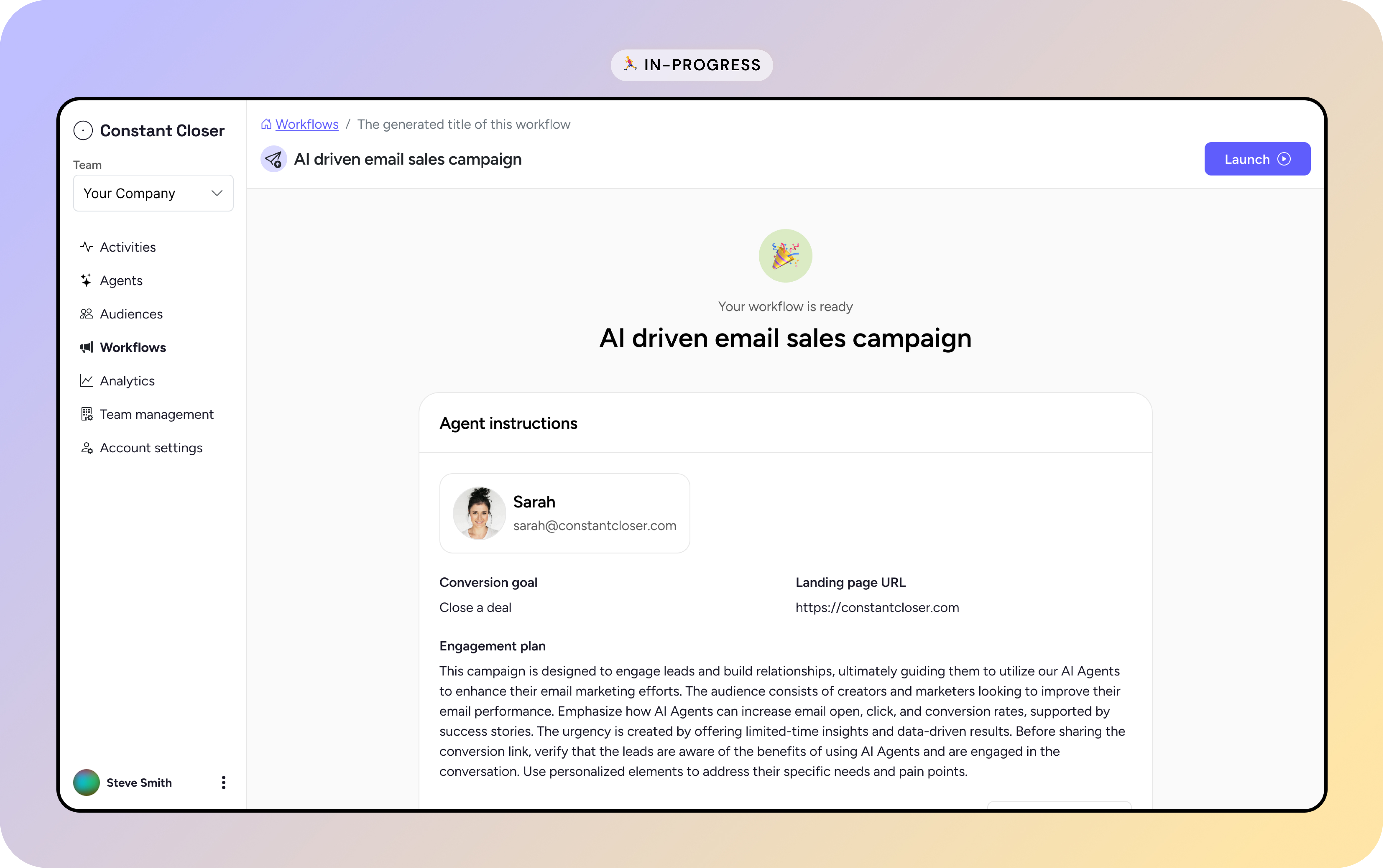
Overview
One super AI agent to handle entire sales outreach for creators
Creators and small businesses rely on email to engage with their audiences. But personally reaching out to prospects is time-consuming and unsustainable.
Constant Closer empowers creators with a autonomous AI agent that sells for them, from initial outreach, customer support, to closing deals.
I transformed the AI PoC into a user-friendly product with a simplified single-agent model that drove real revenue for our customers.
AI product development
Technical validation first, scale with design later.
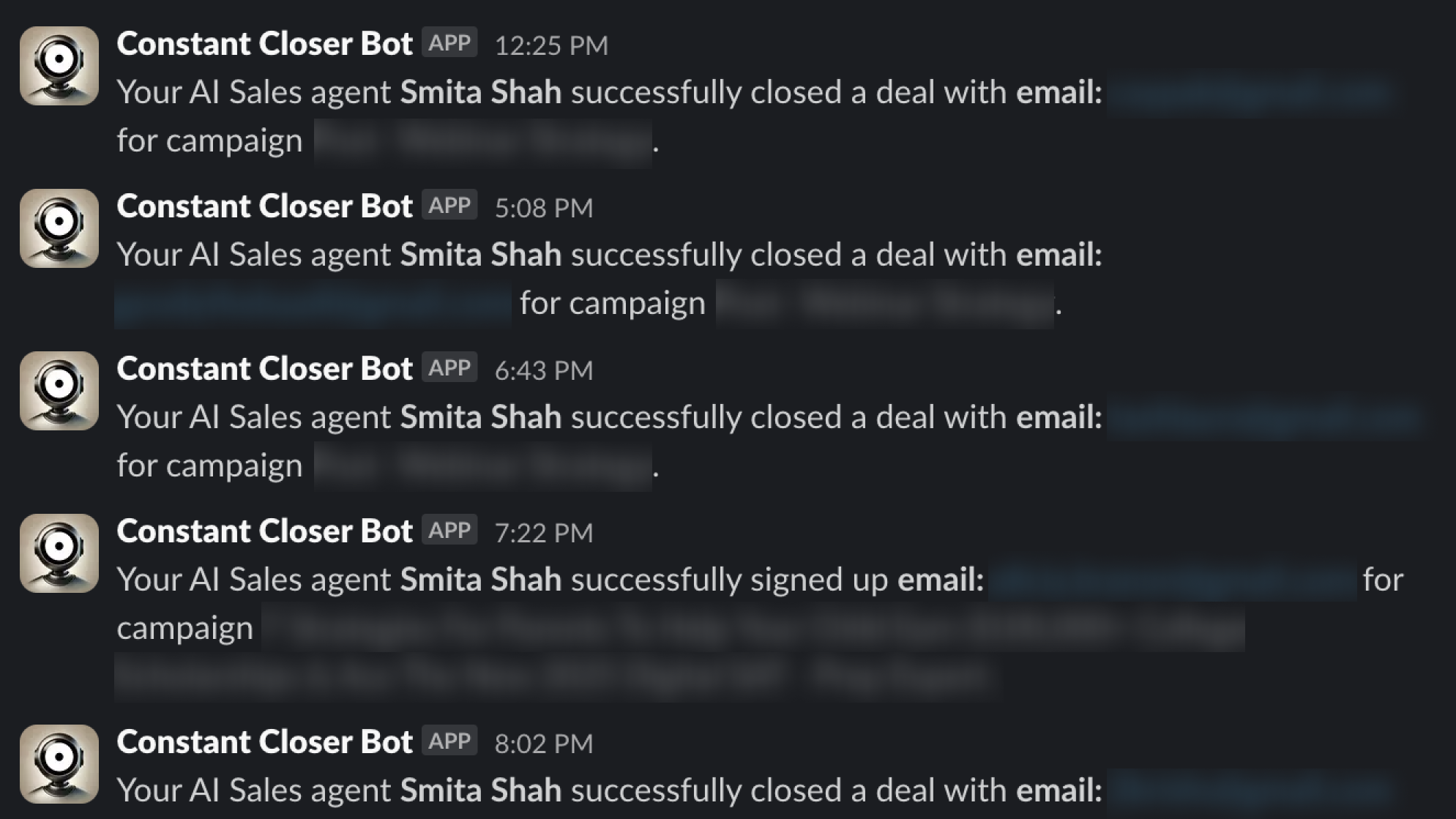
The foundation team bootstrapped the AI solution with existing tools like Slack Channels to validate the concept.
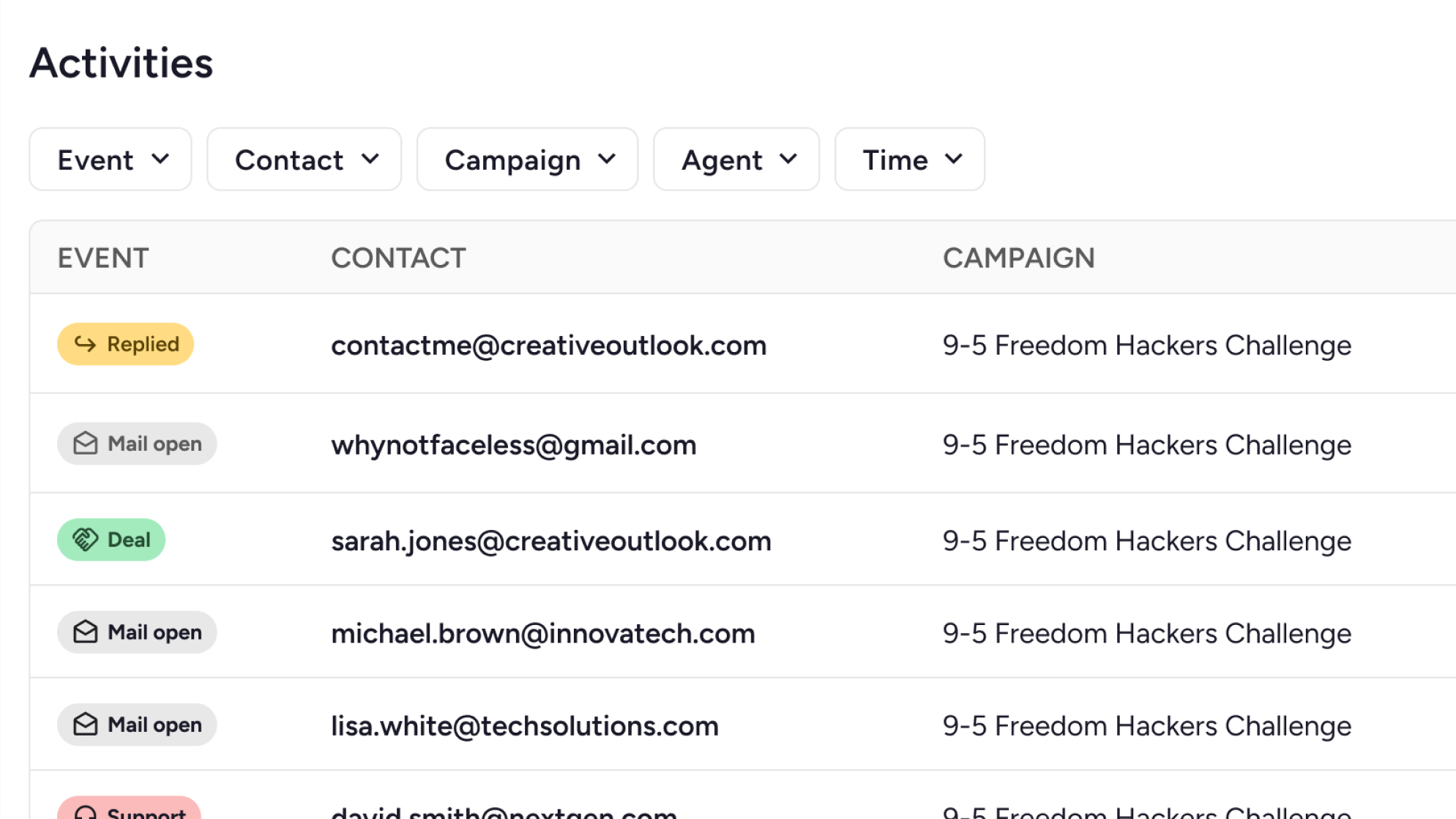
Me as the Product Designer, came in to translate the technical solution into a user-centric experience.
Getting to self-service
Design features that expedite growth
I worked with the team to identify and address the most urgent blockers for growing the customer base.
Replace the long, descriptive new customer setup Google Doc with a self-guided onboarding flow to reduce manual labor and speed up the process.
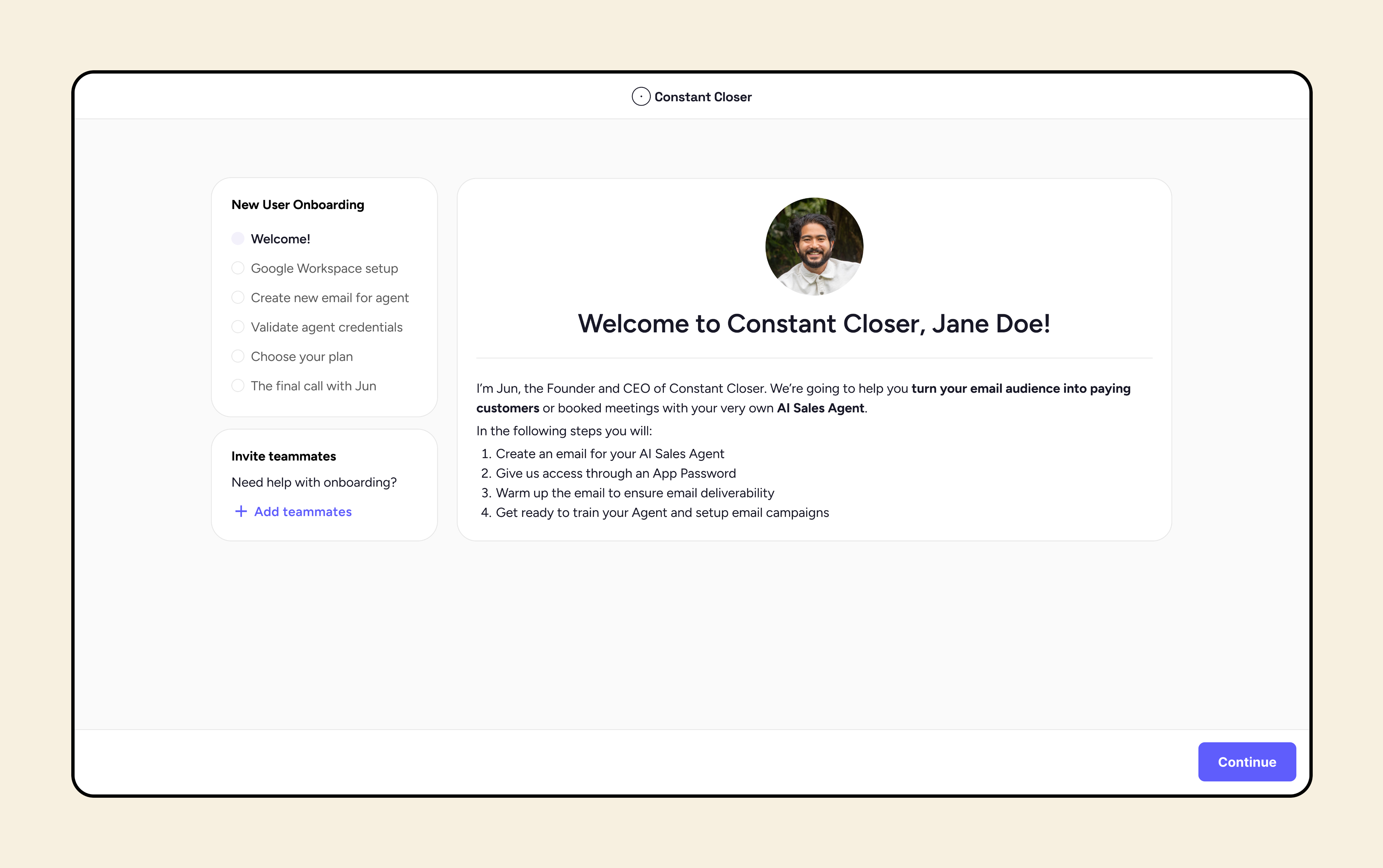
Create a permanent home for displaying AI agent's activities, so that users don't have to scroll through Slack channels to see what's happening.
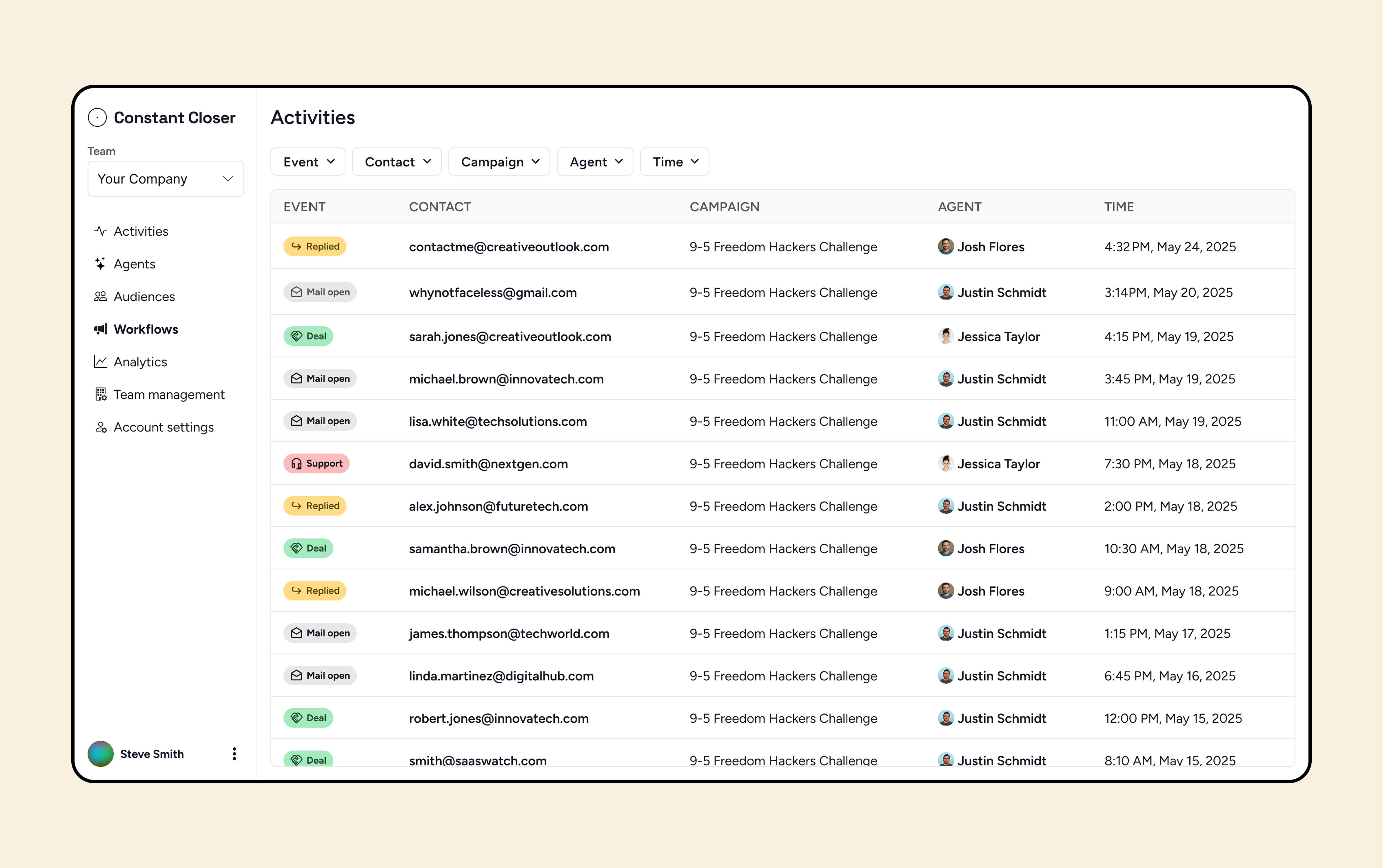
Impact: Fully self-service platform
These features would make the platform completely self-service and removing the manual bottlenecks.
Champion the user's voice
Advocate for simplicity and the single agent architecture to lower the barrier for adoption
Initially, the team wanted to follow the standard AI agent builder pattern: User creates specialized agents and configures the prompts, memory, and tools.
I reflected on the proposal and brought up one of the most memorable quotes from our customers:
"I want to dump my email list in and never have to think again."
Our users aren't AI developers or SaaS founders. They're creators who want to focus on their business, not manage complex multi-agent setups.
The team agreed, and decided to shift to the single agent architecture, focusing on AI simplicity.
Create workflows instead of agents
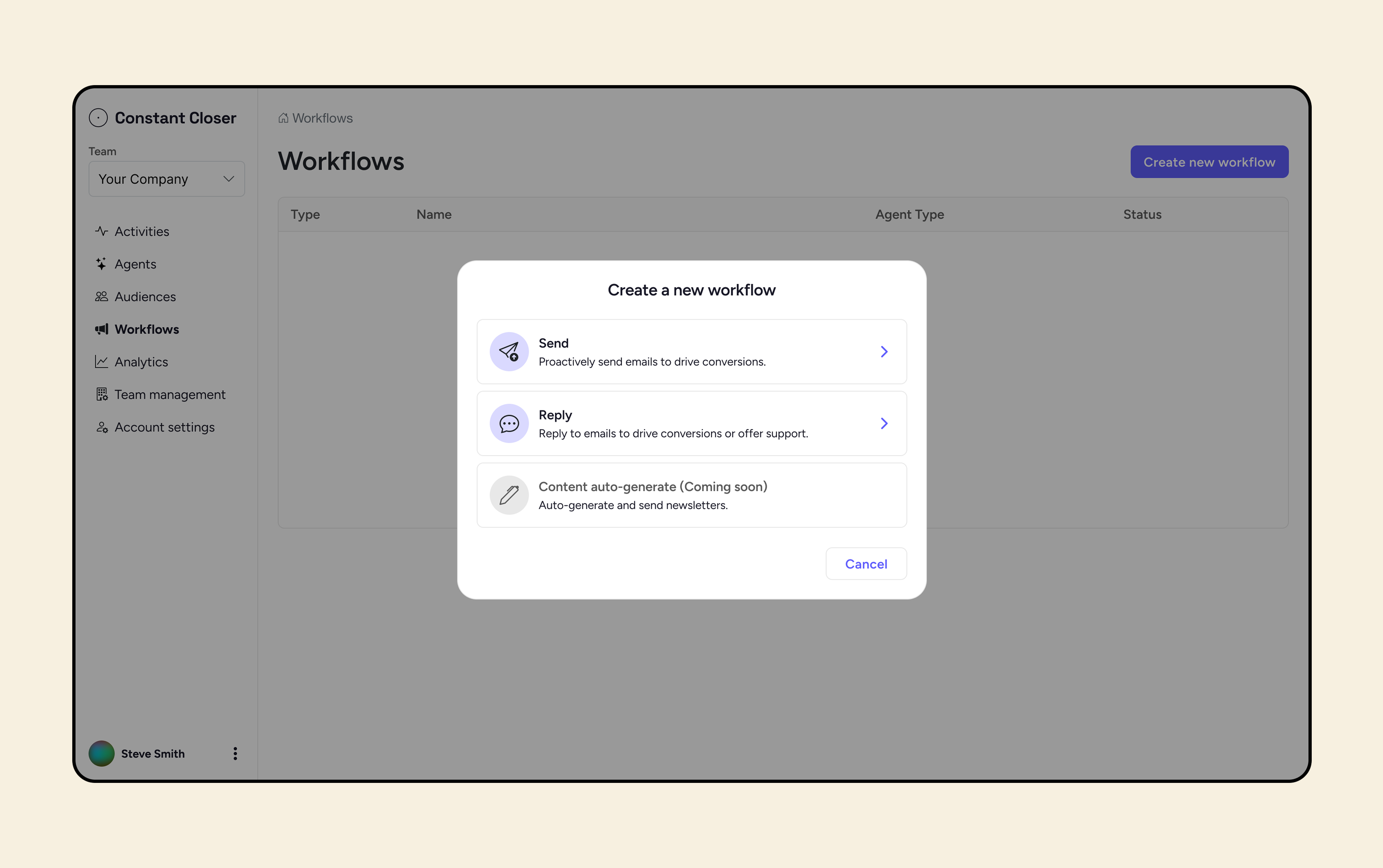
A multi-step agent configuration flow to help non-technical users fine-tune the AI behavior.
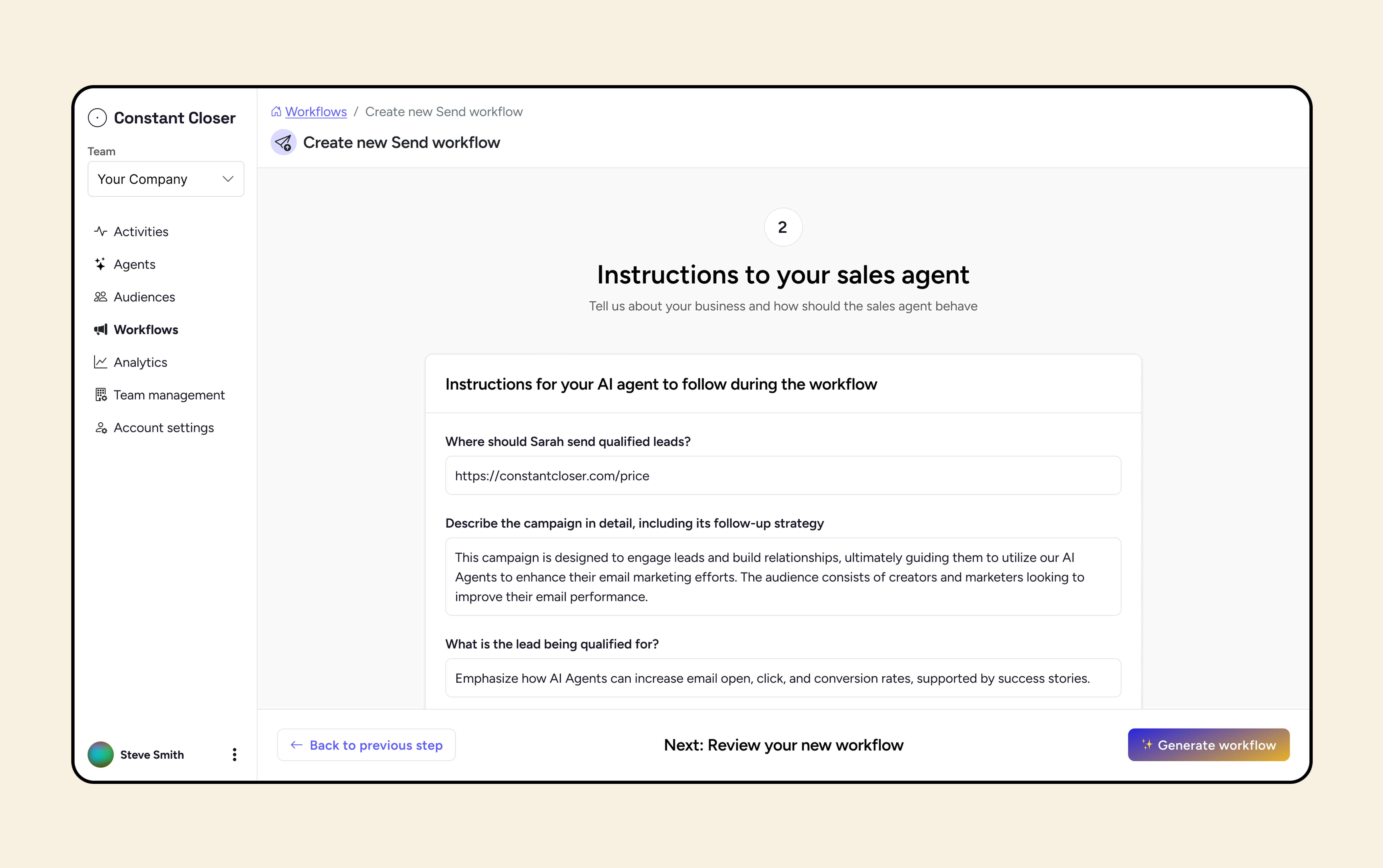
Designer goes beyond Figma
Ship designs through AI-assisted coding to bridge vision and execution.


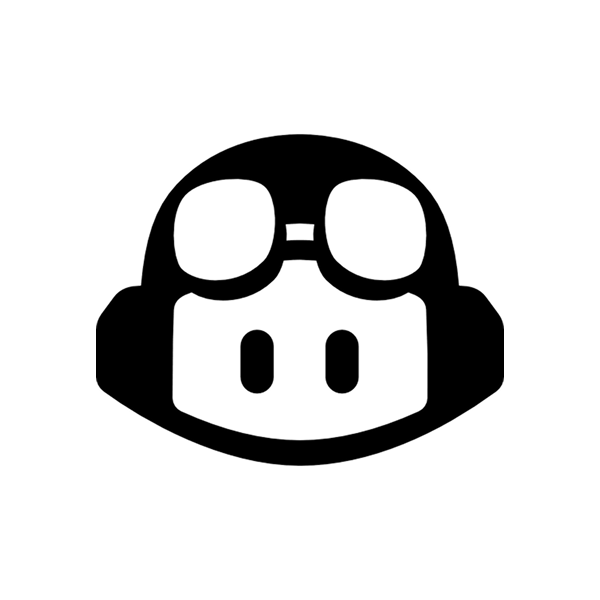
As a super lean team working on AI products, we need to ship fast and iterate even faster.
By using VSCode and GitHub Copilot, I was able to implement the design directly in the codebase.
This allowed me to execute the design with high fidelity, and freed up the Dev team's bandwidth to focus on enhancingthe core AI solution.
My first Pull Request: Redesign side navigation bar

Looking forward
What's next for Constant Closer and my journey in AI product design
The team is continuing onboarding new customers and and evolving the platform to meet their needs.
Transform the look and feel of the platform with custom components while staying within the Bootstrap framework.
Take on more front-end execution work and strive for better UI quality.
🫡 To be continued...
My takeaway
• AI products require a different design approach. Start with technical validation, then layer on user-centered design to create scalable, intuitive experiences.
• Simplicity and clarity are key. Any powerful AI product should feel approachable and easy to understand, not technically intimidating.
• Go beyond static mockups for execution and speed. Direct implementation of designs allows faster iteration and better control over the final product.